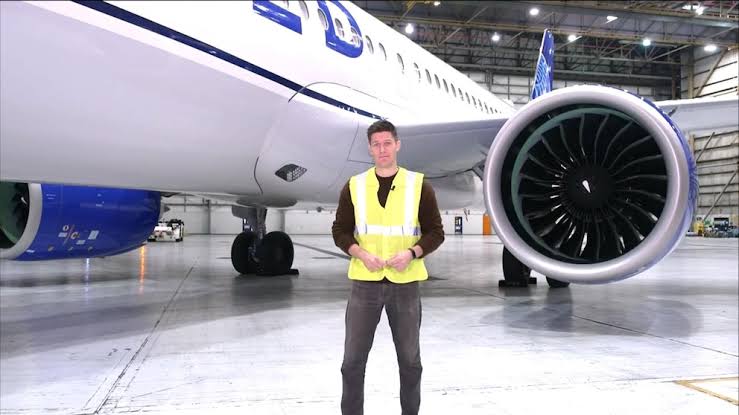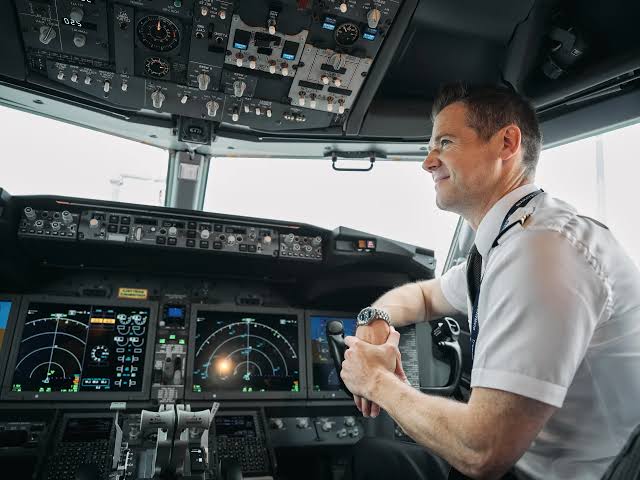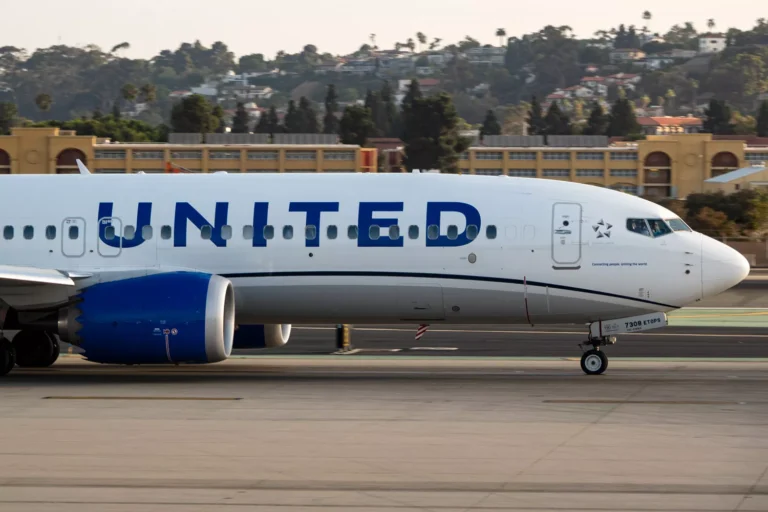O’Hare Airport Tragedy: United Airlines Jet Loses Brakes, Crushes Ground Marshal’s Legs — Pilot Under Scrutiny
O’Hare Airport Tragedy: United Airlines Jet Loses Brakes, Crushes Ground Marshal’s Legs — Pilot Under Scrutiny
Chicago, IL — In a harrowing accident at Chicago’s O’Hare International Airport on Sunday morning, a United Airlines aircraft lost its braking ability while taxiing and severely injured a ground operations marshal. The aircraft, a Boeing 737-800 operating as Flight UA2214, was arriving from Dallas-Fort Worth when the incident occurred on Taxiway Juliet shortly after 10:45 a.m. local time.
According to airport authorities and multiple eyewitnesses, the aircraft was nearing its designated gate when it suddenly accelerated beyond normal taxiing speed. Despite urgent hand signals from ground personnel, the plane failed to slow down and struck the traffic marshal, pinning him against a tow vehicle. Emergency responders were on the scene within minutes, but not before the marshal sustained severe injuries to both legs. He was rushed to Advocate Lutheran General Hospital in critical condition, and doctors later confirmed he had undergone a double leg amputation.
The Federal Aviation Administration (FAA) and the National Transportation Safety Board (NTSB) have launched a joint investigation into the incident, which is being classified as a serious runway incursion. Early reports suggest that brake failure was involved, though investigators are also probing whether pilot error contributed to the crash.
A Routine Arrival Turns Tragic
Flight UA2214 had landed on Runway 28R without incident. Weather conditions were clear, with mild winds and no visibility restrictions. The aircraft taxied toward Gate C23 when, according to preliminary statements, the cockpit crew reported “loss of brake pressure” moments before impact. Air traffic control logs reveal a brief but panicked exchange between the cockpit and ground operations, with the pilot stating, “We’re rolling—we’ve got no brakes!”
Within seconds, the plane veered slightly off course and failed to halt at the customary stop line. The marshal, identified as 34-year-old Antonio Reyes, was performing standard guiding procedures at the time and had no time to evade the incoming aircraft. Co-workers described the moment as “chaotic and traumatic,” with some visibly shaken even hours after the scene was cleared.
Who’s to Blame?
While mechanical failure is currently listed as a leading cause, a separate line of inquiry is now focusing on the crew’s response. Pilot actions in such emergencies are governed by strict protocols, including use of alternate braking systems and engine thrust reversal techniques. The NTSB is examining whether these procedures were executed correctly, or whether delay or misjudgment contributed to the accident.
A source close to the investigation, speaking on condition of anonymity, said, “There’s a timeline where every second counts. We’re looking closely at cockpit decisions during those final moments before impact.”
The captain of the flight, a 17-year veteran with over 11,000 flight hours, has been placed on administrative leave pending the outcome of the inquiry. United Airlines issued a statement expressing sympathy for the injured employee and promising full cooperation with investigators.
“We are heartbroken by the incident that occurred this morning at O’Hare,” the statement read. “Our thoughts are with our injured colleague and his family. We are working closely with authorities to determine the exact cause of this tragedy.”
System Failures and Red Flags
Maintenance records for the aircraft, obtained by investigators, will play a critical role in determining whether there were any pre-existing issues with the braking system. The Boeing 737-800 in question was last inspected six days prior and had logged over 45,000 flight hours.
An anonymous United maintenance technician told reporters that the aircraft had “some minor hydraulic issues flagged in the last month, but nothing that would ground it.” The NTSB has seized the cockpit voice recorder (CVR) and flight data recorder (FDR) and is currently analyzing both.
Aviation analyst Sarah Kleinfeld said this incident could expose deeper issues within fleet maintenance or pilot training.
“This wasn’t a situation with poor weather or bird strikes. This happened under textbook conditions,” she noted. “If brake failure occurred, it begs the question—why wasn’t there a redundant system to prevent the worst-case outcome?”
Ground Crew in the Crossfire
Perhaps the most overlooked yet most vulnerable personnel in aviation are the ground crew—those who guide aircraft into gates, load luggage, refuel planes, and keep the operations moving. Unlike passengers or cabin crew, these workers have little to no protection in cases of mechanical malfunction.
Several airport workers spoke out anonymously following the incident, expressing fear and frustration. “We are treated like we’re invisible,” one worker said. “We stand on open tarmac guiding these planes with our bare hands. One wrong move—or one brake failure—and it’s over.”
Labor unions are calling for immediate reforms to improve safety for ground crew. The Airline Workers Union Local 740 has already scheduled a press conference and plans to push for mandatory buffer zones, more visible protective gear, and enhanced emergency alert systems between pilots and ground crew.
Legal and Financial Fallout
Legal experts say United Airlines could face significant liability if the incident is determined to be due to pilot negligence or preventable mechanical failure. Personal injury lawsuits, combined with potential FAA fines, could cost the airline millions. The family of Antonio Reyes has retained legal counsel and has not issued a public statement yet.
“This is not just a tragic accident—it’s a workplace catastrophe,” said attorney James Clifton, a specialist in aviation law. “If there’s evidence of negligence, either in the cockpit or in maintenance, United could face a major legal reckoning.”
Additionally, the FAA may impose sanctions or mandate procedural changes depending on the outcome of the investigation. These could include revised taxiing procedures, new cockpit-to-ground communication protocols, and mandatory checks on aircraft braking systems after landing.
A Wake-Up Call for the Industry
As investigations continue, this accident is already reverberating throughout the aviation industry. Airlines across the country have reportedly initiated internal reviews of their taxiing procedures and emergency handling protocols. Industry groups are urging for systemic improvements, not just at O’Hare, but nationwide.
“This should be a wake-up call,” said Captain Linda Perez, a retired commercial pilot. “There’s no excuse for a human being to lose both legs in a setting as controlled as a taxiway. We’ve engineered planes to fly safely through lightning storms, and yet we can’t ensure the safety of someone guiding a plane to the gate?”
Looking Ahead
As Antonio Reyes battles to recover in a Chicago hospital, many are left asking how a routine landing could end in life-altering tragedy. His co-workers have launched a GoFundMe campaign to support his medical expenses, which has already raised over $150,000 within 24 hours. Messages of support have poured in from across the aviation world.
For now, the focus remains on the investigation. The NTSB has indicated it may take several weeks before releasing a preliminary report, and months before a final conclusion is drawn. In the meantime, United Airlines, the FAA, and the broader aviation community will be under pressure to ensure this never happens again.





